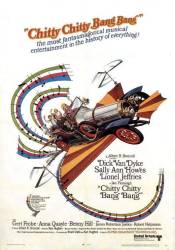
Question: Who was the dwarf in the castle scene when the children arrive at the castle in the child catcher cage?
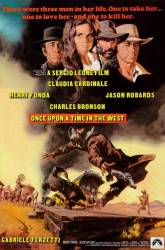
Question: In the scene where Cheyenne visits Jill at the McBain's residence for the first time, he asks her whether she knows something about a man with a harmonica, although the three of them (Cheyenne, Harmonica and Jill) met earlier in the movie when Cheyenne tells Harmonica to "watch those false notes." Why doesn't Cheyenne just ask her for the man whom she probably still remembers from this event?
Answer: The movie was filmed at multiple locations in Spain and Italy, and also in Utah. Chances are they filmed out of sequence and made minor changes to the script later in the movie. There are many things left unclear in the movie, for example the same scene at the cantina/store, just after Cheyenne's crew shows up, he refers to Harmonica by his name when no-one said his name up until that point.
Answer: He meant what does she know about him personally. What's his real name, where does he come from and why is he so interested in everything.
Then he should have asked "do you know something about THE man with THE harmonica?" instead of "do you know something about A man going around playing A harmonica?" (time stamp 01:05:25 for the restored version) or am I missing something? He already knows that she has seen him because he was there so he could just ask "do you know something about the guy with the harmonica we met at the bar earlier?" I just don't understand why Cheyenne is using an indefinite article because he and Jill both know who he is referring to.
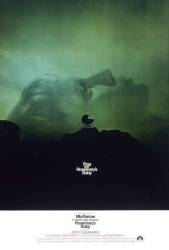
Question: When Rosemary gets into the Castavets right at the end, she walks past a man, and then the man says something. She then replies "Be quiet, you're still in [some location]" What was that about...?
Chosen answer: Roman Castavet is trying to get Rosemary's attention, and she says "Be quiet, you're in Dubrovnik, I can't hear you". That was in reference to the fact that Roman and Minnie were supposed to have gone to Majorca or Dubrovnik after she found out that Roman was supposedly dying (which was just a lie Rosemary was told so she wouldn't suspect them when her baby was taken). Roman and Minnie got in a cab and pretended to go to the airport, but never left town.
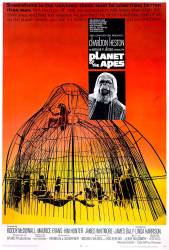
Question: At the end he sees the Statue of Liberty on the beach. How did the statue get there from Ellis Island?
Answer: He's in the same location as Ellis Island. Thousands of years have resulted in significant changes geographically.
Answer: The statue was destroyed during the nuclear war at some point in the past. The remnant of it had washed ashore to where Taylor finds it.
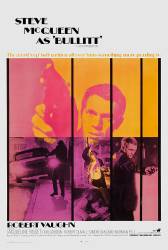
Question: What character did the actor John Aprea play in the movie? The credits at the end lists him as 'The Killer', but who did he kill? He wasn't one of the two hit men at the hotel.
Answer: Notice: Aprea is credited as "Killer", not "The Killer." I think this confuses reviewers, as they assume he must be one of the hit men. However, the hit men are credited as "Phil" (Bill Hickman) and "Mike" (Paul Genge). Genge is much older than Aprea and Aprea does not look like the grey-haired hit man, as another contributor has pointed out already. There is no other killer in the plot. Perhaps Aprea's scenes were cut.
Answer: The doctor that alerts Bullitt that the grey-haired hitman is in the hospital looks like Aprea. He calls himself Dr. Kenner, and that character is uncredited. Maybe "Killer" was supposed to be "Kenner" in the credits?
Answer: Aprea portrays the Organization hood who shoots wildly at Johnny Ross as Ross' car careens out of the parking lot into and down the alley during his getaway in Chicago.
Answer: In a Bullitt movie clip on the Turner Classic Movies (TCM) website, it identifies John Aprea as the killer who goes to the hospital to murder the witness. Bullitt chases him to the basement toward the end of the film.
The killer that Bullitt chases is Paul gange (listed in the credits in the role of "Mike") despite the TCM website. Aprea is listed in the movie's credits as the killer, but also lists gange as Mike. Look the name up on IMDB and you can see from his photo that he is the guy Bullitt chases. Why John Aprea - at least 20 years younger than the killer in the movie - is credited as the killer, I have no idea. And I have no idea where in the movie Aprea really appeara.

Question: If Hal is supposed to be this flawless computer that never makes a mistake or gives false information why then does it tell the astronauts Frank and Dave that a system will fail when that turns out to be wrong?
Answer: This is gleaned from the Internet: The novel explains that HAL is unable to resolve a conflict between his general mission to relay information accurately and the specific orders requiring him to withhold the mission's true purpose from Bowman and Poole. HAL reasons that if the crew is dead, he would then not need to lie to them. He fabricates the failure of the AE-35 unit so that their deaths would appear accidental. In other words, HAL is asked to lie, and he doesn't take to it very well, to say the least. The conflict between his mission objectives backs him into a corner where he has to make some pretty big (and cold) leaps in logic in order to reconcile the paradox in his programmed orders.
Answer: In the sequel, "2010" it was revealed HAL was programmed with all the information about the mission to the monolith, but Frank and Dave were not. HAL was programmed not to reveal anything until the scientists were taken out of hypersleep. When Frank and Dave tried to uncover the mystery surrounding the mission, HAL was forced to lie in the only way he knew how. He was not programmed to lie.

Question: Mary's attire looks more like 1960s than 1940s. Any info on this?
Chosen answer: This is not unusual in older films. Earlier costume designers were less attentive to historical accuracy and freely incorporated current fashion trends into period movies. It was just an accepted practice and movie audiences back then were often less discerning and/or unaware of inaccuracies. Today's costumers have greater access to historical information, do more research, and strive for authenticity.

Question: Nick was supposed to be watching Fanny sing at Keany's, but I just don't see him in the audience shots. Error?
Answer: If you mean their first meeting, most likely it was a deliberate decision by the filmmakers that Nick wasn't seen in the audience. The scene was constructed to introduce Nick and show Fanny's reaction as she opens the dressing room door, seeing him for the first time. Nick being seen earlier would also have lessened the audience's reaction as well.
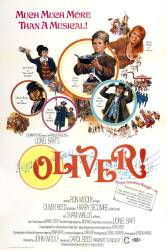
Question: Why was this movie rated G? It does contain some violence and a murder scene and some content that's inappropriate for children.
Chosen answer: You are correct that "Oliver" does have some material that might be intense for young children - including a murder, some minor violence, issues of adoption, child abuse, kidnapping, and even some sexual content (but only by innuendo). Drinking alcohol is also involved, and some of the characters with whom we are meant to sympathize are, in fact, thieves. But intense content does not necessarily preclude a movie from obtaining a "G" rating. There have been several G-rated movies which have content, including killing, that could be frightening for children, including "Bambi," "The Lion King," "Willie Wonka and the Chocolate Factory," and "The Wizard of Oz," to name a few. In "Oliver," most of the violence is alluded to, and the murder of Nancy is committed out of sight (only Sykes' hand is visible, and Nancy's screams are heard), though it is frightening and realistic. Violence can be permitted in G-rated films, as long as it is "minimal." Sexual innuendo is permitted, in small doses, as long as lewd acts aren't shown. Intense content is also permitted. Drug use is not permitted, but I suppose the tavern scenes are cartoonish enough as to not warrant a more harsh rating. The bottom line is that ratings are determined by the MPAA - Motion Picture Association of America, and that association is given wide latitude and discretion. Apparently, the "mature" content of "Oliver!" was not viewed as rising to a level which the MPAA felt would warrant a more stringent rating.

Question: How old was Olivia Hussey when this movie was made? Also, what is the name of the guy who plays Romeo and how old was he?
Answer: Olivia Hussey was born April 17, 1951 so she was probably still 16 when the film was being made, but 17 when it was released in 1968. Leonard Whiting was born June 30, 1950 - almost a year older than Olivia.
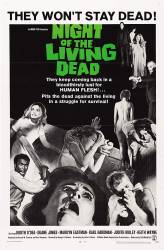
Question: Is it true that missing footage from the movie has been found?
Answer: Yes, director George Romero announced in 2015 that he had rediscovered some 16mm working footage that never made it into the movie, including a full 9-minute sequence (a jump-cut of the basement scene) featuring the largest zombie attack in the film. Although Romero died earlier this year, film legend Martin Scorsese was said to be overseeing the film's restoration including the found footage. Http://bloody-disgusting.com/news/3366197/george-a-romero-finds-9-minutes-of-lost-night-of-the-living-dead-footage/.
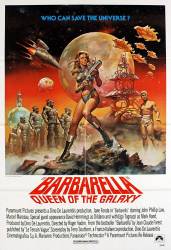
Question: Serious spoiler alert, but this has always puzzled me. At the end of Barbarella the Black Queen unleashes "Matmos", an evil energy which destroys nearly everybody and everything in the film. Pygar (the blind angel) escapes, only rescuing two people from the cataclysm: Barbarella and the Black Queen. Barbarella asks Pygar why he saved the Black Queen after all the evil things she did (she even blinded Pygar). Pygar replies "an angel has no memory." I never got the point of that. What did Pygar mean? (In his previous conversation he recalled things that happened before he was blinded, so obviously he did have a memory.) And I could not see the point of or meaning to this ending at all. Did any of this make sense to anybody else?
Answer: You say that Barbarella was beyond lame-it was totally atrociously bad and ludicrous. It was released in autumn 1968, when I was 12, and too young to see it at the cinema. I finally got to see Barbarella when I was 18 and it was shown late one night on television. I wholly concur: I thought it was totally, atrociously bad and ludicrous, and my opinion has not changed since.
Answer: I concede your point. Perhaps I was being a bit too literal. When Pygar says he has no memory, he may not mean that all past events clear from his mind (in the way that, for example, you could delete a computer file from your laptop). Instead, he might mean he does not dwell on the past, or he does not retain bitterness or anger for past wrongs, or he does not return evil on those who were bad to him. I think the film was based on a comic that ended in pretty much the same way. All the same, I always thought the ending was rather lame. It was as if somebody told Roger Vadim (the director) "hey, this film is supposed to be 90 minutes long, but we've done 89 minutes filming, and we still haven't got an ending." So Roger Vadim got the Black Queen to unleash Matmos and destroy everything. (To be pedantic, Barbarella is 98 minutes long, but I hope you understand what I mean.) Personally I thought the ending of "Monty Python And The Holy Grail", where a police force stops the film, was a similar disappointment.
Answer: Dennis Waterman.